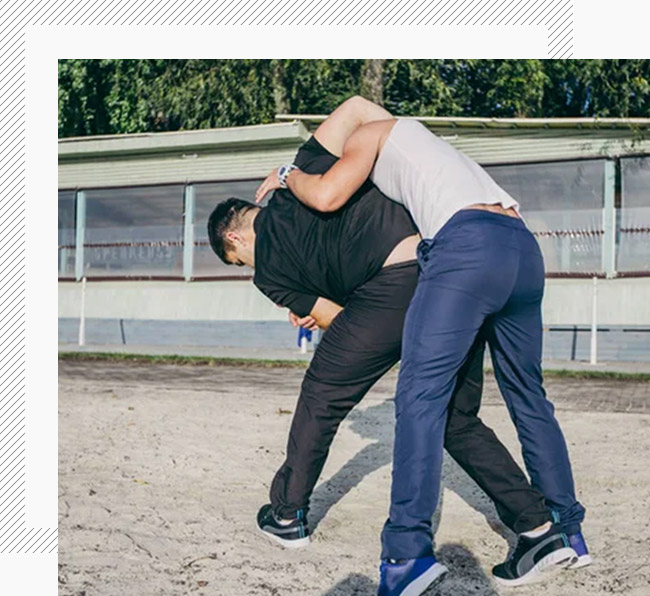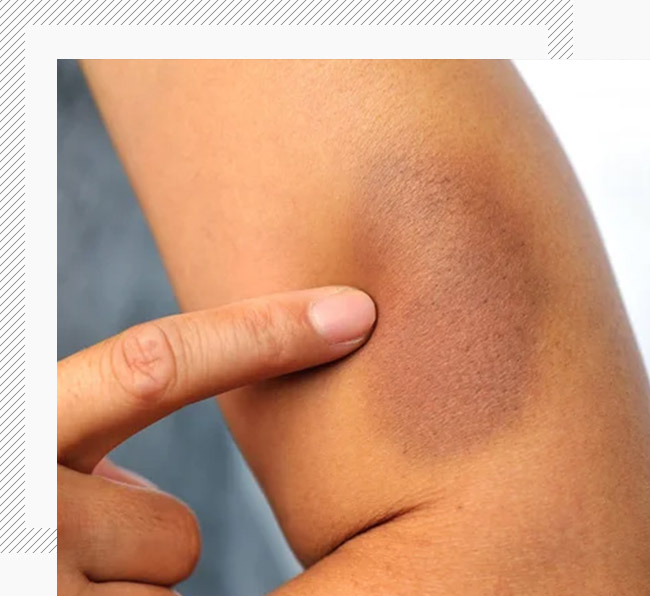In NSW, the Crimes Act 1900 outlines a number of assault related offences. This article discusses the various assault offences in NSW.
Assault Charges

Common Assault
Common assault is the least serious type of assault within The Crimes Act. It can occur even if the accused does not make any physical contact with the victim.
Common assault is defined in case law to include:
- Any act that causes the victim fear of immediate unlawful force (threat of force), or:
- Or any application of unlawful force including touching and striking (use of force).
Can I be Found Guilty of Common Assault?
For a person to be found guilty of common assault, the police must prove that:
- Your conduct either:
- causes the victim fear of violence, or:
- applied any level of violence to the victim.
- Your conduct occurred without the consent of the victim. For example, certain sports include full contact such as a Rugby or Boxing. However, such contact in the course of the sport will not constitute an assault as the participants have given an implied consent.
- Your conduct was done either recklessly or intentionally.
- Intention is a straightforward concept. It refers to an intention to produce a certain result. For example, for a person to intend to commit an assault, they must intend to make contact with the victim, as opposed to accidentally making contact.
- Reckless refers to when the accused foresees the possibility of their conduct causing fear of violence to the victim, but goes ahead with it regardless. For example, a person is reckless if he/she, in the course of an argument, throws an object at the victim. The accused does not have to intend for the object to strike the victim. What the court considers is that the accused realised that he/she may hit the victim and threw the object regardless.
Common Assault Defences
The NSW law outlines a number of defences against a charge of Common Assault, including:
- Self-Defence: This is where you commit the assault in defence of yourself, a third person, or property. It is crucial to understand that self-defence will only be available if the court is satisfied that the accused’s conduct was reasonable in the circumstances.
- Consent: This is when the victim has given consent to the accused. For example, in a boxing match, both parties have given consent to physical contact.
- An accused will not be guilty of common assault if he/she accidentally came in contact with the victim on a bus or inside a lift.
- If the victim is unaware of the assault.
- Lawful correction: This refers to the right parents possess to discipline their children. It is important to note that this defence will only be available if the court is satisfied that the accused’s conduct was reasonable.
- Duress: This refers to when the accused is forced to commit the assault.
- Citizen’s arrest: This refers to instances when the accused had used force to arrest the victim who was committing a crime. It is important to note that this defence will only be available if the court is satisfied that the victim was committing an offence at the time of the assault and that the accused’s conduct was reasonable in the circumstances.
Possible Sentences for Common Assault
The court is empowered to impose a wide range of sentences for a Common Assault charge. Importantly, the maximum sentence is 2 years imprisonment and/or a fine of $5,500.
However, in practice, the maximum penalty is only imposed in limited circumstances such as when the accused has a lengthy criminal history and when the assault is serious in nature.
Common penalties include the recording of a conviction, accompanied by the imposition of a good behaviour bond for a certain period of time
Will I Receive a Criminal Conviction for Common Assault
It is very possible that a person found guilty of Common Assault will be convicted, unless the court imposes a Conditional Release Order with no conviction. The team at Criminal Law Group are experts in criminal law and will present the best possible case in mitigation on your behalf.


Aggravated Assaults
The law outlines a number of aggravated forms of assaults. Aggravated assaults are more serious than common assault and carry heavier penalties. The aggravating features of the offence include:
- Assaults resulting in a certain outcome- This includes assault occasioning actual bodily harm.
- Assaults accompanied by particular intentions- This includes assaults with intention of stealing.
- Assaults against certain type of persons- This includes assaulting police officers.
Assault Occasioning Actual Bodily Harm
Assault Occasioning Actual Bodily Harm (AOABH) is a serious type of assaults that involves the infliction of force. It is an assault that causes the victim to suffer from “actual bodily harm”. Actual bodily harm includes scratches or bruises. Importantly, actual bodily harm includes serious forms of psychological injury.
Can I be Found Guilty of AOABH?
For a person to be found guilty of AOABH, the police must prove that:
- You applied any level of force to the victim.
- Your conduct occurred without the consent of the victim. For example, certain sports include full contact such as a Rugby or Boxing. However, such contact in the course of the sport will not constitute an assault as the participants have given an implied consent.
- Your conduct was done either recklessly or intentionally.
- Intention is a straightforward concept. It refers to an intention to produce a certain result. For example, for a person to intend to commit an assault, they must intend to make contact with the victim, as opposed to accidentally making contact.
- Reckless refers to when the accused foresees the possibility of their conduct causing fear of violence to the victim, but goes ahead with it regardless.
- Your conduct caused actual bodily harm such as scratches or bruises to the victim.
Defences for a Charge of AOABH
The NSW law outlines a number of defences against a charge of AOABH, including:
- Self-Defence: This is where you commit the assault in defence of yourself, a third person, or property. It is crucial to understand that self-defence will only be available if the court is satisfied that the accused’s conduct was reasonable in the circumstances.
- Consent: This is when the victim has given consent to the accused. For example, in a boxing match, both parties have given consent to physical contact.
- Duress: This refers to when the accused is forced to commit the assault.
Possible Sentences for AOABH
The court is empowered to impose a wide range of sentences for an AOABH charge. Importantly, the maximum sentence is 5 years imprisonment. However, the maximum penalty is increased to 7 years if the assault took place in company of other people.
However, in practice, the maximum penalty is only imposed in limited circumstances such as when the accused has a lengthy criminal history and when the assault is serious in nature.
Possible penalties for a first-time offender include the recording of a conviction, accompanied by the imposition of a good behaviour bond for a certain period of time.
Can I Avoid a Criminal Conviction for AOABH
The courts will commonly impose a criminal conviction for an AOABH charge. However, it is possible for the courts to impose a sentence that does not involve the recording a conviction. The team at Criminal Law Group are experts and can present a mitigating case on your behalf in court


Wounding Charges
Wounding is a serious criminal offence that carries significant penalties. It is defined in the common law to involve the breaking of the skin. In other words, it involves cuts to the skin of the victim.
Can I be Found Guilty of Wounding?
For a person to be found guilty of Wounding, the police must prove that:
- You did a certain act.
- Your act caused the victim wounding.
- Your conduct was done either recklessly or intentionally.
- Intention is a straightforward concept. It refers to an intention to produce a certain result. For example, for a person to intend to cause a wound, they must intend to cut the victim.
- Reckless refers to when the accused foresees the possibility of their conduct causing ABH but goes ahead with it regardless.
Defences for a Charge of Wounding
The NSW law outlines a number of defences against a charge of Wounding, including:
- Self-Defence: This is where you commit the assault in defence of yourself, a third person, or property. It is crucial to understand that self-defence will only be available if the court is satisfied that the accused’s conduct was reasonable in the circumstances.
- Consent: This is when the victim has given consent to the accused. For example, in a boxing match, both parties have given consent to physical contact.
- Duress: This refers to when the accused is forced to commit the assault.
- When the injury caused does not constitute “wounding” at law.
- When the “wound” is not caused by the accused’s act.
- Mental health: In some circumstances, the charge will be dismissed if the accused was suffering from mental health problems at the time of the offence.
- Intoxication: In some circumstances, the accused’s level of intoxication is considered by the courts to determine whether the accused intended to cause wounding.
Possible Sentences for Wounding
Wounding is a serious criminal offence that carry significant penalties. The maximum penalty for wounding varies depending on a number of factors. For example, wounding with intent carries a maximum penalty of 25 years imprisonment. Reckless wounding carries a maximum penalty of 10 years if the crime is committed in company of other persons, and 7 years if the crime is committed alone.
A sentence of imprisonment is possible for a charge of wounding, particularly if a person is charged with wounding with intent.
If you or someone you know is facing a wounding charge, it is important that you seek legal advice with a legal specialist. The team at Criminal Law Group are experts in criminal law and will work tirelessly to present an adequate mitigating case on your behalf.

Grievous Bodily Harm
Grievous Bodily Harm (GBH) is one of the most serious types of assaults. It is defined to include any permanent or serious disfiguring of the person, the destruction of a foetus and any grievous bodily disease. The courts have defined GBH as “really serious” harm.
Can I be Found Guilty of GBH?
For a person to be found guilty of GBH, the police must prove that:
- You did a certain act.
- Your act caused the victim GBH.
- Your conduct was done either recklessly or intentionally.
- Intention is a straightforward concept. It refers to an intention to produce a certain result. For example, for a person to intend to cause GBH, they must intend to cause a really serious injury.
- Reckless refers to when the accused foresees the possibility of their conduct causing ABH but goes ahead with it regardless.
Defences for a Charge of GBH
The NSW law outlines a number of defences against a charge of GBH, including:
- Self-Defence: This is where you commit the assault in defence of yourself, a third person, or property. It is crucial to understand that self-defence will only be available if the court is satisfied that the accused’s conduct was reasonable in the circumstances.
- Consent: This is when the victim has given consent to the accused. For example, in a boxing match, both parties have given consent to physical contact.
- Duress: This refers to when the accused is forced to commit the assault.
- When the injury caused does not constitute “GBH” at law.
- When the GBH is not caused by the accused’s act.
- Mental health: In some circumstances, the charge will be dismissed if the accused was suffering from mental health problems at the time of the offence.
- Intoxication: In some circumstances, the accused’s level of intoxication is considered by the courts to determine whether the accused intended to cause wounding.
Possible Sentences for GBH
GBH is a serious criminal offence that carry significant penalties. The maximum penalty for GBH varies depending on a number of factors. For example, GBH with intent carries a maximum penalty of 25 years imprisonment. Reckless GBH carries a maximum penalty of 14 years if the crime is committed in company of other persons, and 10 years if the crime is committed alone.
A sentence of imprisonment is possible for a charge of GBH, particularly if a person is charged with GBH with intent.
If you or someone you know is facing a GBH charge, it is important that you seek legal advice with a legal specialist. The team at Criminal Law Group are experts in criminal law and will work tirelessly to present an adequate mitigating case on your behalf.

Assault/Resist Police Officer in Execution of Duty
Assaulting police officers in execution of duty is a serious criminal offence. The courts consider these offences as extremely serious offences that require the imposition of adequate punishment.
Can I be Found Guilty of Assaulting a Police Officer?
For a person to be found guilty of GBH, the police must prove that:
- You assaulted a person.
- The person is a police officer.
At the time of the incident, the police officer was executing his or her duty
Defences for a Charge of Assaulting a Police Officer
The NSW law outlines a number of defences against a charge of assaulting a police officer, including:
- If the police officer was not acting in execution of their duty. This would include instances where the officer’s conduct exceeds the scope of their power, meaning that they were acting unlawfully.
- If the alleged conduct does not amount to an assault at law.
- Duress: This refers to when the accused is forced to commit the assault.
Possible Sentences for Assaulting a Police Officer in Execution of Their Duty
The courts regard such offending as very serious criminal conduct that requires adequate punishment. The maximum penalties for assaulting police officers range from 5 to 14 years depending on a number of factors. For example, if the assaults occasions ABH, then the maximum penalty is 7 years imprisonment. If the assault causes wounding or GBH, the maximum penalty is 12 years. Importantly, the maximum penalty is increased if the offence occurred during a public disorder.
Generally speaking, it is possible to be sentenced to a term of full-time imprisonment for an assault against police officers.
It is important to get it right the first time. The team at Criminal Law Group are legal experts and can assist you in obtaining the best possible outcome.
Get in Touch With The Best Lawyers
Our lawyers at Criminal Law Group regularly appear in the Local and District Court representing clients for drug and traffic offences.





As an exclusive criminal law practice, we are proud to offer professional criminal law services.
Information
Services
- Assault Offences
- Bail Applications
- Domestic Violence & AVOS
- Driving & Traffic Offences
- Drug Offences
- Dishonesty & Fraud Offences
- Firearms & Weapons Offences
- Local, District & Supreme Court
- RMS, Licence Appeals
- Robbery Offences
- Hearings/Trials
- Mental Health
- Assault Charges
- No Conviction
- Driving Under the Influence of Illicit Substances

